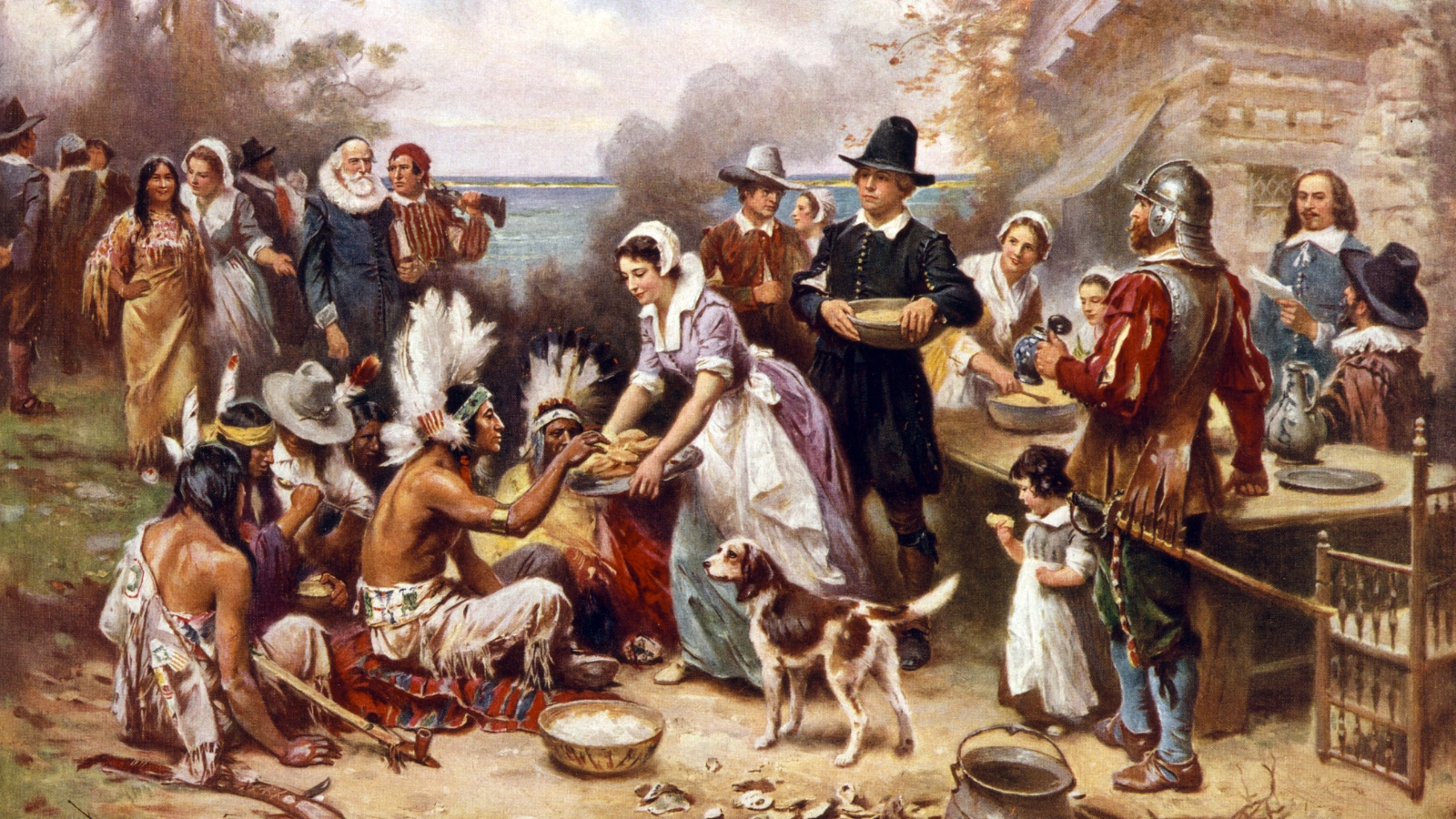Your Thanksgiving table may look cozy, but would the Pilgrims even recognize it? Uncover the truth behind these ‘traditional’ table settings.
🌐 #News #Lifestyle #Thanksgiving #Food
ST. PAUL, MN
– When we gather around the Thanksgiving table, we’re often met with beautifully arranged plates, sparkling silverware, and festive centerpieces. Yet, many of us don’t think about the origins of these settings or the deeper meanings behind them. Today’s Thanksgiving tables brim with a sense of tradition, abundance, and gratitude. But have you ever wondered how much of this mirrors what the Pilgrims might have actually experienced?
Let’s take a look back at the past to uncover the surprising reality of those early Thanksgivings and reveal how some of our table traditions might hold hidden meanings we’ve long forgotten.
A Thanksgiving Table of Today vs. the Pilgrims’ Table
Modern Thanksgiving dinners have come a long way from what the Pilgrims likely experienced. Today, we set our tables with matching dinnerware, often arrange festive centerpieces like pumpkins and candles, and may even have decorative cornucopias spilling over with mini gourds and fruit. This image, though iconic, doesn’t truly reflect what the first Thanksgiving looked like.
For the Pilgrims, the Thanksgiving table was less about design and more about practicality. There were no elaborate place settings, matching utensils, or grand displays of food. Instead, their meals were about sustenance and survival.
As guests at a 1621 Thanksgiving feast, you’d probably see simple wooden plates or trenchers (wooden boards with a slight indentation) shared by several people, and much of the food would be served from large communal bowls. The concept of individual plates and decor was still a far-off luxury.
What the Pilgrims Really Used: A Practical Feast
The Pilgrims approached Thanksgiving with a no-frills attitude, focusing on function and the bare essentials. Dinnerware was scarce; the first settlers didn’t have the means to import elegant plates or silverware.
Instead, they likely used rudimentary wooden bowls, knives, and maybe a spoon or two, as forks hadn’t become common in the colonies yet. Food was served in large, communal dishes, and people shared with those around them, creating a unique sense of camaraderie.
As for the menu, it would look very different from what we see today. Alongside the iconic turkey, Pilgrims probably dined on foods like venison, shellfish, and native grains. Squash, beans, and corn (in the form of cornbread or porridge) were likely present, thanks to Native American influences. But forget about mashed potatoes, cranberry sauce, or pumpkin pie; these staples came along later.
The Significance of Each Thanksgiving Table Element
Let’s look at some of the elements that make up our modern Thanksgiving tables and what these items might have represented for the Pilgrims.
Plates and Tableware
: Today, plates and tableware might seem basic, but for the Pilgrims, these items were precious. In the Pilgrims’ world, where scarcity was common, tableware was often shared among family members, emphasizing community and gratitude. What we might see as simple could have been a valuable possession back then.
Centerpieces and Decorations
: Today’s tables are often adorned with beautiful centerpieces symbolizing abundance. However, for the Pilgrims, table decorations were rare luxuries. At best, their “centerpieces” would have been practical items like herbs for seasoning the meal or small bowls of nuts to nibble on.
Candles and Lighting
: Candles today add a warm, festive glow to our gatherings. In Pilgrim times, candles were essential for practical reasons but limited due to cost and scarcity. When they did have candles, it wasn’t to create ambiance, but to keep the meal visible after the sun went down. Think of them as early, functional flashlights rather than decorative items!
Seasonal Produce and Cornucopias
: The overflowing cornucopia represents abundance today, but it was practically unheard of at the Pilgrims’ table. Instead, any seasonal produce like squash or beans had to be shared sparingly, underscoring the preciousness of every single crop. In a world where crop yields could mean life or death, the presence of even a single pumpkin on the table was a small miracle.
Setting Your Table Like the Pilgrims: A Fun Twist for Thanksgiving
If you’d like to honor the spirit of the Pilgrims in a modern way, try creating a “Pilgrim-inspired” table setting this year! Not only is it a conversation starter, but it’s also a simple and meaningful way to approach Thanksgiving.
Use Wooden Bowls and Basic Utensils
: For a rustic touch, consider using wooden bowls or serving platters. Opt for basic utensils, or if you’re really getting into the theme, skip the forks!
Incorporate Natural Elements
: Instead of elaborate centerpieces, use local seasonal plants or herbs, like sage or rosemary, as simple decorations. You could even set a small bowl of nuts or dried berries in the center as a nod to the past.
Feature Foods That Resemble the Pilgrims’ Meal
: Add a few Pilgrim-era items to the menu, like roasted squash, venison, or cornbread. Even if you don’t go all the way, it’s fun to include a few traditional elements and talk about the early settlers’ resourcefulness.
Honor the Values of Gratitude and Community
Thanksgiving is a time for reflecting on what we’re grateful for, but it’s also a chance to consider where our traditions come from. While today’s Thanksgiving tables are often symbols of abundance and togetherness, remembering the original simplicity and practicality of the Pilgrims’ feast brings an added layer of meaning to our celebrations.
As you set your table this year, maybe consider incorporating a bit of Pilgrim-inspired simplicity, honoring the values of gratitude and community that make this holiday so special.
RELATED TOPICS:
Thanksgiving
|
Food
|
History
We value your feedback!
Note: Thank you for visiting our website! We strive to keep you informed with the latest updates based on expected timelines, although please note that we are not affiliated with any official bodies. Our team is committed to ensuring accuracy and transparency in our reporting, verifying all information before publication. We aim to bring you reliable news, and if you have any questions or concerns about our content, feel free to reach out to us via email. We appreciate your trust and support!
Did you find this article informative, inspiring, or thought-provoking? Leave a comment below and join the discussion. We appreciate your opinion and look forward to hearing from you!




